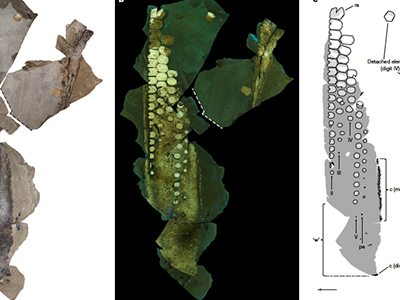You have full access to this article via your institution.
Adaptations for stealth in the wing-like flippers of a large ichthyosaur
The extinct marine mega-predator Temnodontosaurus had specialized adaptations to stealthily hunt its prey, suggests an analysis of a fossil flipper. Temnodontosaurus‘s lifestyle has been a mystery due to a lack of preserved soft tissue, but fossil remains of a fore-fin have revealed several anatomical details that probably reduced low-frequency noise as the animal swam. The authors suggest that these adaptations show that Temnodontosaurus was a stealth predator.
Hear more on the Nature Podcast.







